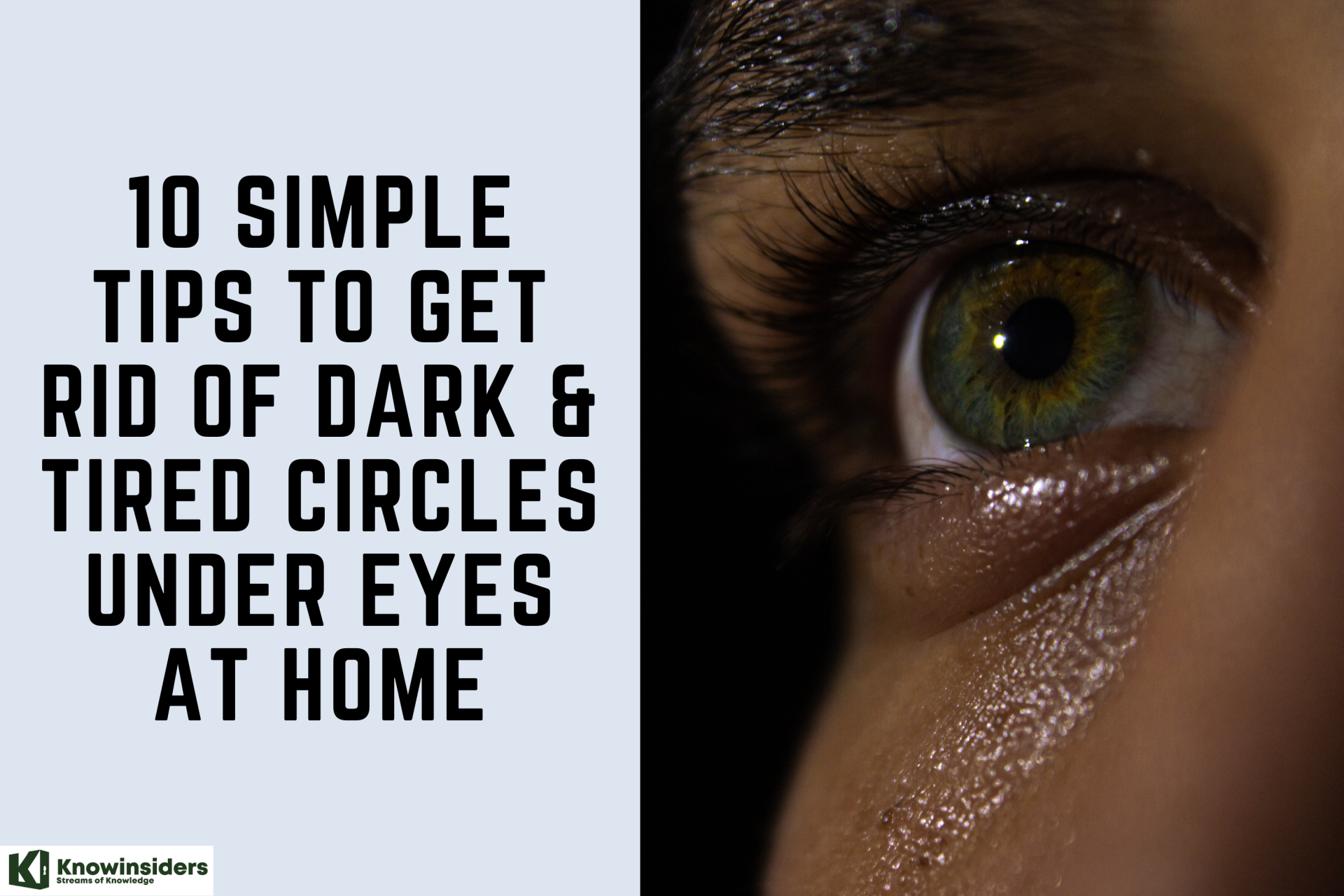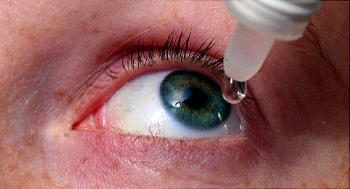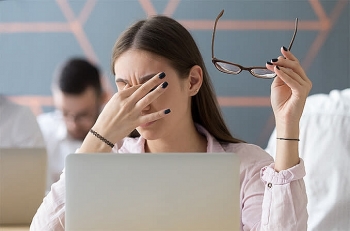How to Get Rid of Bags Under Eyes: At-Home Remedies or Therapies?
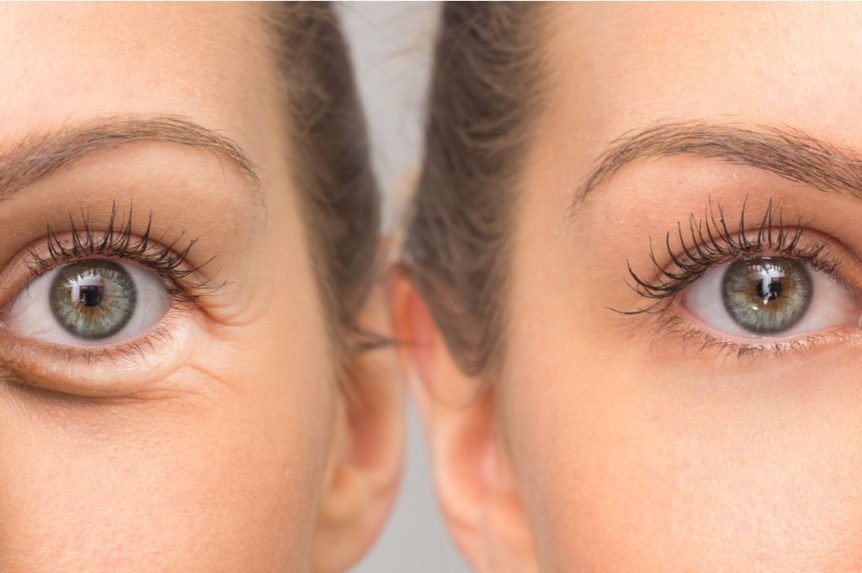 |
| How to reduce bags under eyes? |
| Table of Contents |
What is Bags Under Eyes?
As you get older, bags under the eyes—mild swelling or puffiness under the eyes—are common. The tissues around your eyes, including some of the muscles that support your eyelids, deteriorate as you age.
The natural fat that normally supports the eyes may then transfer to the lower eyelids, giving those lids a puffy appearance. Additionally, fluid may collect in the area beneath your eyes, causing further swelling.
Causes of Bags Under Eyes
The tissues and muscles that support your eyelids deteriorate with age. Fat that is typically restricted to the orbit (the area around the eyes) may start to move into the area below your eyes, causing the skin to begin to sag. Additionally, fluid can collect in the area under your eyes, giving the area a puffy or swollen appearance. This effect is brought on by or made worse by various factors, such as:
Fluid retention, especially upon waking or after a salty meal
Lack of sleep
Allergies
Smoking
Heredity — under-eye bags can run in families
At-home Remedies for Bags Under Eyes
Rarely are bags under the eyes a sign of a serious underlying medical condition; instead, they are typically a cosmetic concern. Bags under the eyes can look better with at-home remedies like cool compresses.
1. Apply tea bags
It's not just for drinking tea. To help with bags and dark circles under your eyes, you can actually use caffeinated tea bags.
Strong antioxidants found in the tea's caffeine may help your skin receive more blood flow. Additionally, it is claimed to block UV rays and possibly slow down aging.
Researchers have praised green tea in particular for its alleged anti-inflammatory properties, which were demonstrated in one study.
To do this:
Steep two tea bags for 3 to 5 minutes.
Let the tea bags chill in the refrigerator for 20 minutes.
Then, squeeze out the extra liquid and apply to your under-eye area.
Leave the tea bags on for 15 to 30 minutes.
Shop a selection of green tea bags.
2. Use a cold compress
Throw away those expensive creams. Making a cold compress from supplies you already own could provide relief from dark circles. For some momentary relief, applying cold to the area can help the blood vessels constrict quickly.
Even though you can buy a cold compress at the store, making one at home can be just as effective.
Some DIY options include a:
chilled teaspoon
cool cucumber
wet washcloth
bag of frozen veggies
Before applying, wrap your compress with a soft cloth to protect your skin from getting too frosty. You only need to apply the compress for a few minutes to see results.
3. Clear out your sinuses with a neti pot
Some people firmly believe that using a neti pot will help you get rid of your dark circles and under-eye bags. You put saltwater (or regular saline solution) in a neti pot. To clear your sinuses of mucus and other debris, insert the spout into your nose.
To do this:
A saltwater solution (1/2 teaspoon salt to 1 cup water) should be added to your neti pot. Before using, let the water cool to body temperature after being heated to dissolve. It is most comfortable to be warm or lukewarm.
Over the sink, cock your head to the side. The nostril that is now closest to the ceiling should receive the pot's spout.
As the solution is gently poured into the nostril, inhale through your mouth. The other nostril should receive the solution's drainage.
Continue by angling your head in the opposite direction.
Use filtered, distilled, or other sterile water to rinse your pot after each use.
Before storing, let the pot dry naturally.
Online, you can find low-cost neti pots. If you decide to try this method at home, be sure to make your saltwater solution with distilled or sterilized water. Use of boiled, safe-temperature tap water is also possible.
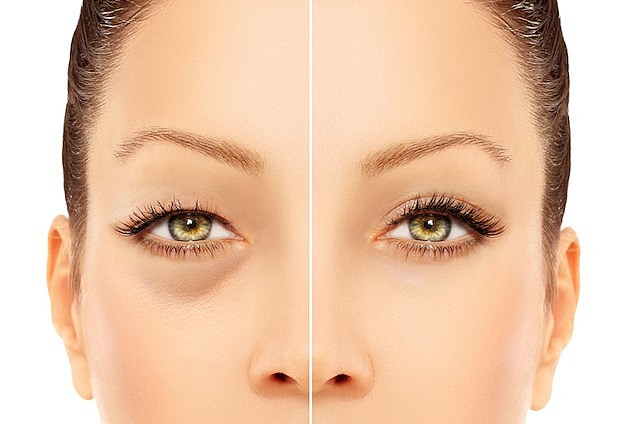 |
| At-home remedies for Bags under eyes |
4. Stay hydrated
Approximately 60% of your body weight is made up of water. As a result, it may not come as a surprise that dehydration can cause under-eye bags. Increased water consumption should be helpful.
How much is sufficient? For men, experts advise consuming about 13 cups of fluids daily, and for women, about 9 cups.
Do not enjoy water? The good news is that your daily total for fluids includes all fluids. Water is still a calorie-efficient choice. Consider sparkling waters, flavored waters, or even fruit-flavored water. Another excellent option is decaffeinated herbal tea, either hot or cold.
5. Take an antihistamine
Under-eye bags and dark circles can be brought on by allergies. Additionally, you might notice eye redness or watery, itchy eyes. Your immune system's reaction to something irritating it or allergens is what triggers this reaction.
Ask your doctor about taking over-the-counter (OTC) allergy medications if you think your under-eye bags may be caused by allergies.
Some brands include:
Benadryl
Zyrtec
Claritin
Purchase antihistamines online.
It’s also a good idea to avoid potential allergens whenever possible.
Some personal care items, including soaps, cosmetics, and hair dyes, may cause allergies. Consider keeping a diary to see what substances or other things cause the most reaction if you're having trouble determining the cause. Discuss allergy testing with your doctor if this is a persistent issue.
6. Add retinol cream to your routine
You may have used creams in the past, but concentrating on specific ingredients is key. Retinol creams have been used for a variety of skin issues, including:
acne
psoriasis
aging
certain cancers
This ingredient is related to vitamin A and it comes in cream, gel, or liquid form.
How can retinol aid in reducing eye bags? This substance can help skin deficiencies of collagen when applied topically. Different over-the-counter (OTC) products may contain lower concentrations of retinol, but your dermatologist must write a prescription for stronger creams.
Typically, retinol is applied to the skin once daily, about 30 minutes after washing your face. If you are pregnant, avoid using retinol creams and avoid taking extra vitamin A.
7. Wear sunscreen every day
Protecting your skin against the sun’s rays can help with a number of dermatological issues, like:
premature aging
skin cancer
discoloration
Wearing sunscreen could therefore lessen the appearance of dark circles and under-eye bags.
The American Academy of Dermatology advises sunscreen use for everyone. It's crucial to have broad-spectrum UVA and UVB protection. Choosing a water-resistant, SPF 30 or higher formula is also recommended. Reapply as needed or as instructed on the package. Select a daily moisturizer for your face that has an SPF of 30 or higher.
Here’s a selection of sunscreens with high SPF.
You can also avoid the sun’s harmful rays by:
sitting in the shade
wearing protective clothing
avoiding tanning beds
 |
| Bags Under Eyes Treatment at home |
8. See your derm about microneedling
Another name for microneedling is collagen induction therapy. Its supporters claim that it lessens wrinkles, scars, and even pigment-related problems like dark circles and under-eye bags.
Skin punctures are made during the procedure using tiny needles. This induces a kind of controlled injury, which in turn rejuvenates the skin that is being treated.
Not for those who seek immediate gratification, this procedure. Six sessions typically take place over the course of a month or so. In comparison to more common laser procedures, microneedling is less expensive.
Despite the relatively quick recovery, there are some risks as well. People might experience problems like:
bleeding
bruising
infection
scarring
The at-home kits are not advised by dermatologists because they are less effective and carry some risk of infection spread. To stop the spread of disease, don't share needles with others. People with a history of keloids or those who are prone to scarring should avoid using this method.
9. Take your makeup off before bed
You might be able to prevent bags under your eyes by making improvements to your nightly routine. Every night, wash your face in particular before going to bed.
You shouldn't sleep in makeup for a number of reasons. First off, if you wear mascara or other eye makeup to bed, you could:
irritate them
experience an allergic reaction
develop an infection that creates redness, puffiness, or other symptoms
Some claim that neglecting to wash your face can lead to wrinkles or other skin problems. exactly how? Your skin is exposed to free radicals when you go to bed wearing makeup. This could lead to oxidative stress, which accelerates the aging processTrusted Sourcereliable source for your skin.
10. Cut back on alcohol
To feel better, you might also think about consuming less alcohol. How does this function? It's similar to the notion of consuming more water. Dehydration from alcohol consumption can result in bags and dark circles under your eyes.
If you're in the mood for a special beverage, consider purchasing flavored sparkling water or adding fruit to regular water.
Eyelid surgery might be an option if under-eye puffiness is persistent or bothersome.
When to see a doctor - Therapies
If the appearance of under-eye swelling worries you, there are both medical and surgical treatments available. If you only get treatment to look better, your medical insurance may not pay for it.
Ask your doctor about prescription allergy medications if you believe an allergy is the cause of the swelling under your eyes.
The appearance of puffiness under the eyes can be improved using a variety of wrinkle treatments. These include laser resurfacing, chemical peels, and fillers, which, according to the Mayo Clinic, may improve skin tone, tighten the skin, and revive the appearance of bags under the eyes.
Your doctor will want to rule out any additional potential factors, such as thyroid disease, an infection, or an allergy, that might be causing the swelling. He or she might suggest that you see a doctor who specializes in plastic surgery, eye plastic surgery, or both (oculoplastic surgeon).
Eyelid surgery
The cause of the bags under the eyes may be treated with eyelid surgery (blepharoplasty). The procedure known as blepharoplasty (BLEF-uh-roe-plas-tee) involves the removal of extra fat through an incision made either inside the lower lid or in the upper eyelid's natural crease. Then, using minuscule stitches that dissolve, he or she rejoins the skin. The procedure is typically carried out without a hospital stay.
In addition to correcting bags under eyes, blepharoplasty can also repair:
- Baggy or puffy upper eyelids
- Excess skin of the upper eyelid that interferes with your vision
- Droopy lower eyelids, which may cause white to show below the iris — the colored part of the eye
- Excess skin on lower eyelids
Discuss the aftereffects of eyelid surgery with your doctor, including dry eyes, watery eyes, pain, swelling, bruising, and blurred vision. Loss of vision, bleeding, infections, damage to the eye muscles, corneal abrasions, and drooping eyelids are uncommon complications.

